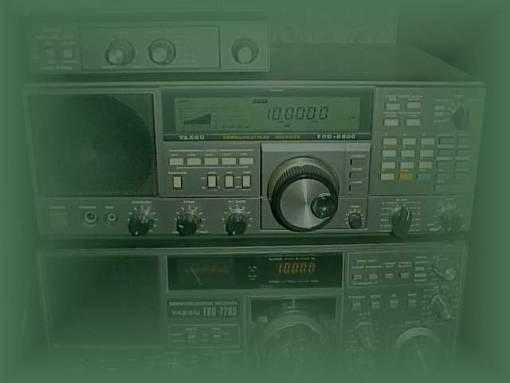HAM Radio Nets
Prof. M.A.Hipparagi, VU2PAL |
Now- a-days there are a number of Ham nets. The purpose of the ham net is not just to check-in and make the check-ins large in number but to be some help and service to other hams. A ham may think just to check-in, say GM and GN, UR 59, QRU es 73s, is not of much importance. He may not need any info or to contact any other ham, but there may be other hams, at a distant place, who may be badly in need of important info about his relative who is admitted in a hospital and needs eagerly to known about the condition of the patient or he may be badly in need of a particular life-saving drug which is not available at his / her place. In such cases you will be of great service to supply the reqauired info about the patient or in sending the most needed medicine, in time, to save a life. You also may be of great help in times of disaters to establish communication between various centers.
A new ham getting the ticket will equip his / her shack by home-brewing or borrowing or if his / her pocket permits, purchasing the required equipment. Now he / she is very anxious to say hello on the air. In the beginning most of the hams are very nervous on coming on the air directly. First they practice the check-in on the ham nets as they have to say only "VU... this is/de VU ......UR59, QRU es 73s". After gaining confidence they will be having the regular QSO.
Check-in: When the net is in progress, the net controller will be calling "Any further callers on... net, please call VU..." or any "any further check-ins?" and gives a pause. At that moment you give your callsign clearly and better in phonetics, one by one. Some times, without your knowledge there may be doubling and the net controller will be confused and will say "please call one by one". Please wait for a second or two, when the frequency is clear, give your callsign. After collecting some callsigns, the net controller starts calling the called stations, one by one, in-order. During this times, the "check-backs" can be avoided as far as possible, unless it is very urgent or emergency message.
The check back may call "Check-back" with more info after the regular check-in order has been attended to. If a contact with other ham is needed you give the callsign of the station you want to contact-as far as possible while your are checking in and QRX on the frequency. This is noted by the net controller and when the needed station checks in he will call you back and allots you a frequency where you may QSY with the other station. On the other hand if you wish to contact a ham who is just checking in and giving the report etc., please wait until he completes the QSO and just after he completes the QSO say "contact" on SSB and "bk" on CW as the controller always leaves a gap (a few seconds) between the completion of the QSO of the checking in station and the call for the next check in.
Immediately the net controller requests the earlier station to stand by and asks you to check in, then you check in giving your callsign etc., then the net controller allots you some free frequency and you both can QSY to that frequency. If you want to contact a ham who is already in the waiting list, you have to QRX until his turn comes for check-in, and after he checks-in, the controller will allot a free frequency for the QSO with that station. For all this to take place efficiently your co-operation is needed. If this procedure is followed, the net controller, who is handling multiway traffic on the net will be pleased to continue the net successfully and also the other stations waiting to check-in will be happy.
Please keep the transmission short, so that more hams will have the chance to check-in. if the length of the each transmission is limited more stations will be able to participate. Do not press the PTT switch / key soon after a "check-back" or "contact" a emergency may be involved. So please leave a short time-gap.
Now-a-days there are some AM stations on the band which is a good sign of home brewing, but they should see that the bandwidth is as narrow as possible. Otherwise there will be heavy QRM over the wide range of frequencies where nobody can enter and that range will be jammed which is highly objectionable. My request to them is to reduce the bandwidth and transmit only that range is free. It is always preffered, internationally, that the AM stations to QSY below 3.6 MHZ on 80M, 7.040 MHz on 40M, 14.1 MHz on 20M, 21.150MHz on 15M and 28.3MHz on 10M bands.
Make it a habit to check-in the nets regularly and take pleasure of getting latest info about the ham world, the Wx info of various places, help in medical and emergency traffic etc., as another appropriate meaning of HAM is Help All Mankind. HAM radio provides with versatility unmatched anywhere. You get all the operating enjoyment on the various bands and the best thing is that you can enjoy the fun on the band and relax getting out of your daily routine. Lastly keep your rig always upto date and smart. 73s - good hamming - CU on the band.

| Go Back | Go Top | Go Home |